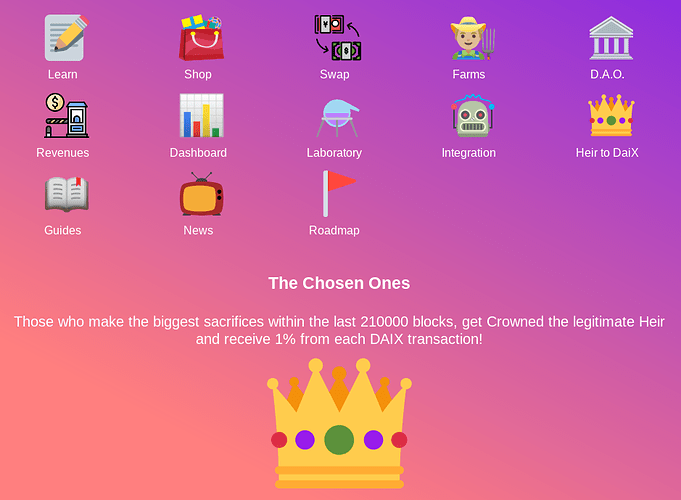Are you someone who loves to experiment? Does a new tokenomic innovation pique your decentralized interests? Would you like to bet on an uncorrelated asset in the middle of a blooming bull-run?
If you answered yes to any of the questions above, The DAIX is for you!
DAIX is a
typeof tokens that follow the Daibase Protocol.
DAIX come in many forms and flavors!
There can be DAIX tokens on Ethereum blockchain (EDAIX), there can be DAIX on xDAI Chain (XDAIX), or even on the B.S.C. (BDAIX) or some other blockchain. At their core, all DAIX tokens are a unit of Elastic Currency – a recent innovation of the past years in the De-Fi realm.
Such assets are self-evolving quantitatively (which means, that their supply numbers change frequently) in reaction to their real-time market conditions and circumstances. Inherently, they tend to be a gauge of market-velocity and are thus considered a safe hedge during uncertain financial overcasts.
The basic mechanism consists of inflating the total supply and distributing it pro-rata among the shareholders when demand for such assets exceeds their supply. The chief indicator of such a situation is the asset’s price “overshadowing its target price”. The converse is true during the times when supply overwhelms the demand, or when the price is “under the target”, leading to deflation.
However, an overt economic fault is introduced with such tokens when they conduct a “pre-sale” and limit the issuance and the underlying elasticity as a function of “network weight”. This drawback deems every shareholder susceptible to high volatility due to other Traders dealing such assets for profits, more like a regular stock (Store of value) that is believed to appreciate in price than a stable currency (Medium of Exchange) that should be used for its non-volatile qualities.
Daibase Protocol rectifies many such negatives at “Protocol-Level” tokenomics, governed by the hyperbolic monetary policy of Automated Market-Making protocols, like HoneySwap. Detailed description of our core facets is out of the scope of this introductory post and we recommend you to grab a follow-up with us at one of our socialization nooks.
The xDAI Chain was chosen as our “First-Home” because of it’s chain stability and predictability. 1 DAI would always close in on 1$ worth of assets. Block-time being a third of Ethereum paves way for further resistance to surge-pricing of Gas. These qualities would be a bedrock to the foundations of a Decentralized Finance protocol like Daibase. The bridge-crossings are a breeze and are very easy to repeat if once acquainted. Daibase doesn’t aim to be a mooning coin: Daibase aspires to be the vertebrae (or maybe, spine) of the 4th Economy’s Permissionless Revolution.
As of tonight, 8 Apr '21, we are testing our public version-zero (v0.1.37) on the Ropsten Network. We cordially invite you to participate and volunteer in our open-testing phase (coordinated via our Telegram) and help us refurbish our shortcomings and speed-up our much-awaited xDAI Chain launch.
Telegram : Telegram: Contact @Daibase
Twitter : https://twitter.com/DaiBased
Discord : https://discord.gg/VU8NHdmYu6
See you and friends soon 


 % uncollateralized.
% uncollateralized.
 section
section ” smart contract, which holds open-auctions directly on-chain for a treasure
” smart contract, which holds open-auctions directly on-chain for a treasure  .
.
 Make sure to join our
Make sure to join our  sorry for the delay, hope we aren’t too late !
sorry for the delay, hope we aren’t too late ! and our T.V.L. numbers are steadily growing!
and our T.V.L. numbers are steadily growing!
 the entire Liquidity (currently valued at $3,267.831) tokens upon each successful mint of DAIX tokens!
the entire Liquidity (currently valued at $3,267.831) tokens upon each successful mint of DAIX tokens! liquidity for its full circulating supply (2021 DAOX) in the coming days. Beyond this, DAOX can only be earned by farming
liquidity for its full circulating supply (2021 DAOX) in the coming days. Beyond this, DAOX can only be earned by farming 